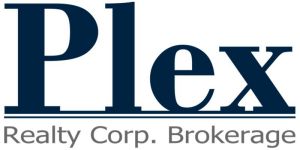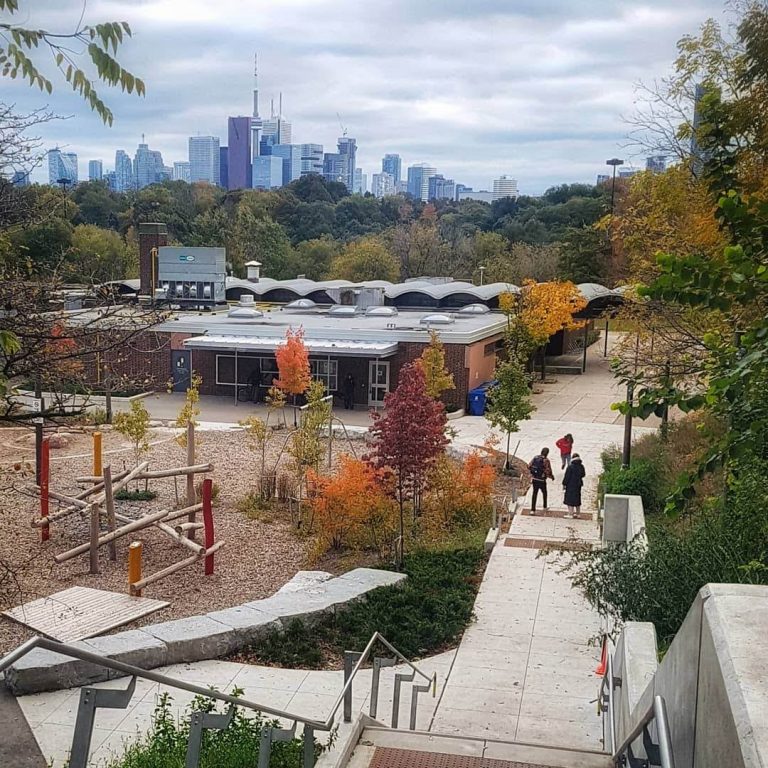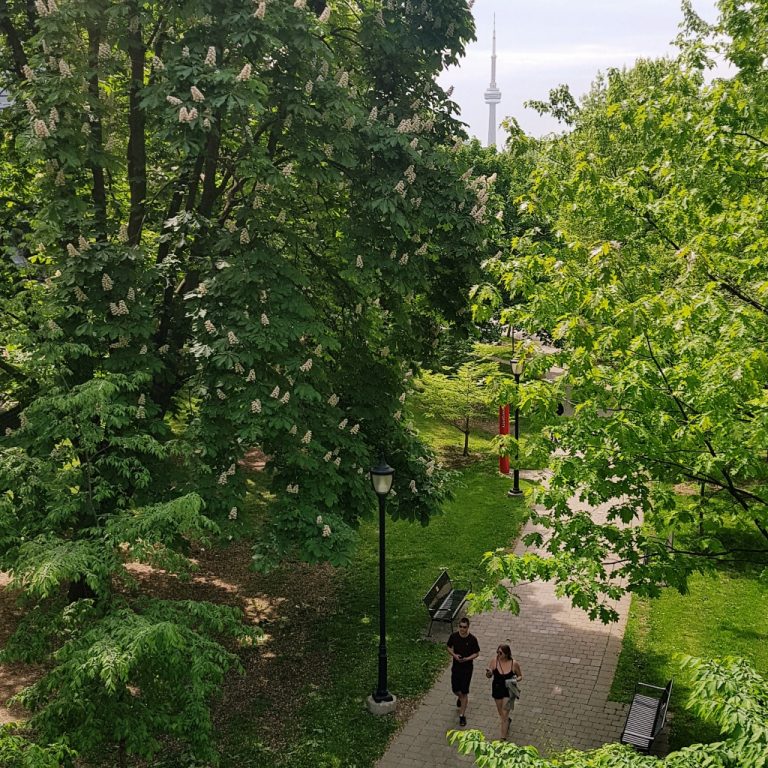Toronto Income Property Newsletter: April 2012
This month I would like to welcome back Jay Snider to Plex Realty. Jay and I have been working together since way back in the CD manufacturing days, so for quite some time. I look forward to working a lot with Jay on the listing side as he is a consummate professional and a great friend.
I’d like to wish all of you a Happy Easter. Hopefully there’s more 20 degree weather coming again.
The market? Still crazy. After the month I’ve had … well let’s just say if I wasn’t grey up top before, I sure would be now. Thanks to all my current clients for hanging in there with me.
The Leafs are out again (what else is new) so that can only mean one thing. Soccer time! TFC Season six is now underway. Can anyone say “CONCACAF champions”?
*
One of the most common concerns that I experience in the field is the question of legal vs. non-legal apartments in residential income properties. The issue usually pertains to basement apartments in duplexes but it also comes into play when there are four, five or more apartments in the property. It is a very tricky subject as I have to deal with the practical realities of the marketplace, namely that most accessory suites are not legal, yet they continue to be rented without issue or trouble from the City. The fact is there is a lot of misinformation floating around out there and most landlords have been renting out “illegal” apartments for years. By and large, if a single-family has been converted to units, it is not likely that all the suites will meet the eligibility requirements to be completely legal – especially if it doesn’t meet the parking specifications. If a property was originally “purpose-built” as a duplex, triplex or fourplex, then the suites are usually all legal. That is why you will often see Sellers and their agents make no warranties or representations with respect to the zoning, use or legality of the self-contained units when an income property changes hand.
Most investors’ primary concern is whether you can finance and insure a property with multiple units. Whether they are “legal” or not is secondary. All suites have to meet fire code for insurance purposes. Also, having a retrofit certificate does not automatically make your units legal either. In a city like Toronto, where the apartment vacancy rate is low and real estate values are high, many people rely on the rental income from a basement apartment to give them the edge they need to own a home. But what is a “legal” apartment? If the suites are not “legal”, how can it be made “legal”? In the process of legalizing the apartment, will I be inviting ‘trouble’? What if the City prescribes improvements that are prohibitively expensive? What if the City decides that I can’t have an apartment? What does that mean for you and your existing tenants?
The following information comes mostly courtesy of Carson Dunlop Home Inspectors. They have done a nice job of trying to sort through all the misconceptions and clearly lay out what it takes for all of your apartments to be legal.
Homeowners with a basement apartment would like to find out what it would take to ‘legalize’ the apartment, but they want to find this out without tipping off the authorities. The only way to know for sure what will be required is to have inspections done by the appropriate authorities.
‘Legal’ involves five separate issues including –
- Do the local bylaws permit you to have a basement apartment?
- Does the apartment comply with the fire code?
- Does the apartment comply with basic building code requirements?
- Does the apartment comply with basic electrical safety requirements?
- Has the apartment been ‘registered’?
The Building Code prescribes minimum requirements for the construction of buildings. For the most part, the Building Code is a code that applies only the day the house was built. The code changes over the years, but we don’t have to keep changing our houses to comply with the code. The code does not apply ‘retroactively’. The Fire Code is a subset of the Building Code. It prescribes construction and safety issues as they relate to how the building is required to perform should it catch fire. A significant distinction with the fire code is that it can apply retroactively. Since the Fire Code applies retroactively, we can see where the phrase “basement retrofit” comes from. A new Fire Code was developed that applies to basement apartments. The code applies retroactively, so all basement apartments whether existing or new must comply with the new Fire Code. All owners of homes with basement apartments were given a period of time to upgrade their homes to comply with the new Fire Code. This ‘grace period’ has long since passed. All basement apartments have to be inspected to verify that they are in compliance. Once this has been verified and any improvements completed, the apartment is given a ‘certificate of compliance’.
With basement apartments prior to 1993, there was little to worry about. After 1993, a permit was required to change a home from single family to multi-family. In 1994, the NDP government in Ontario said that we could ignore local bylaws that prohibited second dwelling units in houses if certain conditions were met. The province set new Fire Code rules for basement apartments. A deadline was established for all existing basement apartments to upgrade to the new fire code. Upgrading to comply with the new fire code is called a “retrofit”. The owners were allowed to apply for an extension for up to two years past the deadline if they had financial or logistical obstacles. Even with the extension, the deadlines have long since passed. In 1995, the provincial Conservative government told municipalities that they could enforce their bylaws regarding basement apartments. A grand-fathering clause says that apartments existing before November 1995 do not have to meet local bylaws.
If you are thinking of adding a basement or another accessory apartment here is the procedure –
Check the Zoning Bylaw at City Hall Buildings Division to find out if basement apartments are allowed.
You would then apply for a building permit. Keep in mind that you will have to comply with today’s building codes.
If you currently own an income property with existing suites and would like to find out if they are legal. The first step is to check with Municipal Property Standards or the Fire Department for a Certificate of Compliance. If there is one, then you are good. If the unit is not registered, you need to verify that zoning bylaws permit an additional apartment. In most cases they do. The next step is to have the fire department inspect the home. They will verify compliance with the fire code. This is the most daunting part of the process because any deficiencies will have to be corrected by order of the fire marshal. The next step is to have the Electrical Safety Authority (which used to be called Ontario Hydro Inspection Department) inspect the electrical system. Once again, you will be required to make any improvements that are prescribed. If the apartment unit passes the inspections, the unit can be registered with Municipal (Property) Standards.
There are four key areas regarding fire code compliance. They all have to do with the safety of the occupants within the suites.
1. Fire Containment
The goal is to contain the fire in the unit that the fire started, long enough to get all of the occupants out of the house. This means that any walls, floors, ceilings and doors between units should control the fire for at least a few minutes. These components are given ‘ratings’ of how long they will survive a direct fire before burning through. A 30 minute rating means that the component will control the fire for at least 30 minutes.
The typical requirement is a 30 minute separation between the units. Drywall and plaster are acceptable. Suspended (T-bar type) ceilings are not. The ceiling must be continuous. For example, this means that you can’t have exposed joists in the furnace room – this area has to be drywalled or plastered as well. Doors should be solid wood or metal – at least 1¾ inch thick.
2. Means of Egress – Escaping the home
The goal is to allow the occupants to get out of the house if there is a fire. There are two common situations; either each unit has its own exit, or there is a common exit. If each unit has its own exit, you are all set. If the units share an exit, it is more complicated.
A common exit is allowed if it is ‘fire separated’ from both of the units with a 30 minute rating. If the common exit is not appropriately fire separated, you can still use this common exit as long as there is a second exit from each dwelling unit and the fire alarms are interconnected (if one alarms, the others will alarm as well). Here is an example: There is a common exit area but the common area does not have a 30 minute fire separation between both of the units. If there is an ‘acceptable’ window for an escape route and the smoke alarms are interconnected, we are all set. The window sill must be within 3 feet of grade. We don’t want people jumping and breaking a leg. The smallest dimension is 18 inches. The opening is at least 600 square inches (30 inches by 20 inches for example) If there is a window well on a basement window, it must extend 3 feet out from the house wall, to allow room to crawl out.
3. Fire detection
All units must have smoke alarms. The owner of the property is responsible for ensuring that there are smoke alarms and that they are maintained. The smoke alarms do not have to be interconnected unless the fire separation to the common exit area does not have a 30 minute rating. It must have at least a 15 minute rating. A carbon monoxide detector (CO detector) may be required by the city.
4. Electrical Safety
An electrical inspection by the Electrical Safety Authority is required. The Electrical Safety Authority used to be called Ontario Hydro Inspection Department. All deficiencies must be addressed.
There are a few more rules that your apartment must meet. All bathrooms need either a window or an exhaust fan. If there is a parking spot for one of the units, there must also be a parking spot for all of the other units. This is where most existing properties fall short. The minimum ceiling height is 6 feet 5 inches. The entrance door size must be at least 32 inches by 78 inches
Two inspections are required: fire code inspection and electrical safety inspection. Once the inspections are done, you will be required to make the prescribed improvements. Improvements may be minor, but can also get quite costly. There is lots of room for the inspectors to be more or less ‘strict’. In municipalities that encourage basement apartments, the inspection may be less strict. In municipalities that discourage basement apartments, the inspection may be stricter.
Inspections for fire code compliance cost between $120 and $300.
Inspections for electrical safety cost $72.
Here are a few useful phone numbers:
The Second Suites kit from City of Toronto is a useful reference. Contact Shelter, Housing and Support at 416-397-4502.
Municipal (Property) Standards:
East York 416-397-4591
Etobicoke 416-394-2535
North York 416-395-7000
Scarborough 416-396-7071
Toronto 416-338-0338
York 416-394-2535
Fire Services (Fire Prevention) www.city.toronto.on.ca/fire/prevention.htm
East York 416-396-3750
Etobicoke 416-394-8588
North York 416-395-7271
Scarborough 416-396-7644
Toronto 416-392-0150
York 416-394-2787





When it comes to property, lease qualities are the way to go in the present Greater and GTA industry. Individuals will always need a position to stay, so there will always be tenants.
The underlying concept is amazing. Hope this is shared with world.
Excellent pieces of information; saved me from opening a can of worms.